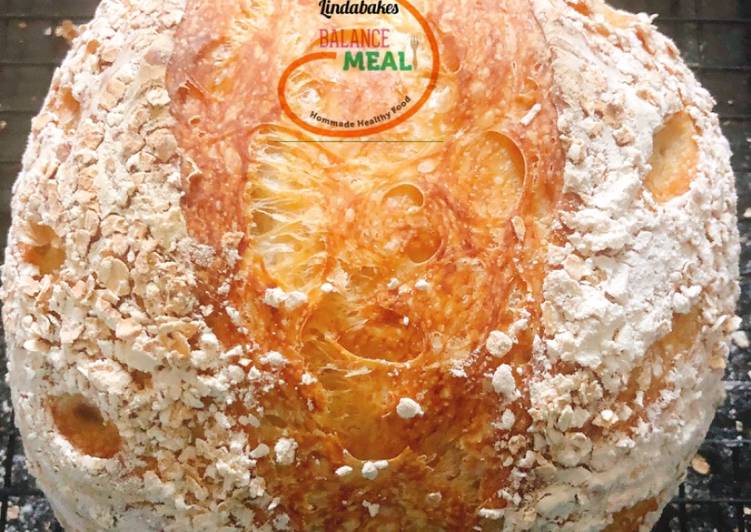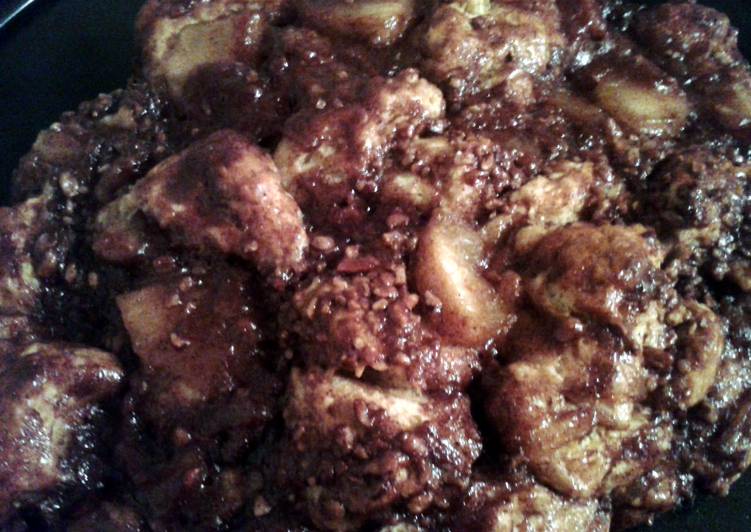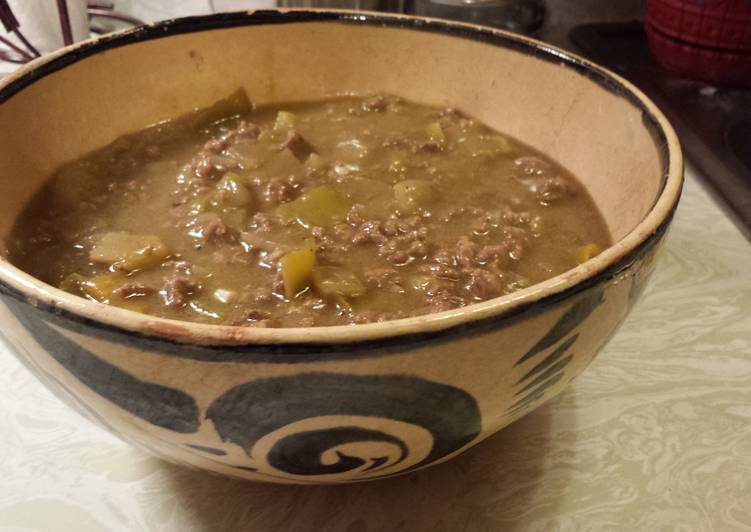
Hey everyone, it is Drew, welcome to our recipe page. Today, I’m gonna show you how to prepare a distinctive dish, basic sourdough bread. It is one of my favorites food recipes. For mine, I will make it a bit tasty. This is gonna smell and look delicious.
This tangy, soft sandwich loaf recipe was originally developed for the bread machine; we've tweaked it here for those of you without a machine. Sourdough bread is made entirely using wild yeast — with a strong, active sourdough culture of wild yeast, you won't need any commercial yeast at all. The bread machine makes short work of this tangy white bread.
Basic Sourdough Bread is one of the most well liked of current trending foods in the world. It is enjoyed by millions daily. It is simple, it is quick, it tastes yummy. Basic Sourdough Bread is something that I’ve loved my entire life. They’re nice and they look wonderful.
To get started with this recipe, we must prepare a few ingredients. You can cook basic sourdough bread using 4 ingredients and 10 steps. Here is how you can achieve that.
The ingredients needed to make Basic Sourdough Bread:
- Make ready 500 g bread flour
- Make ready 5 g salt
- Make ready 50 g active starter
- Take 350 g warm water
People normally think that it is not possible to make at home, but it is very possible. This tasty sourdough bread recipe is great for beginners and as a basic recipe that can be adapted Here is your chance to finally use the sourdough starter you've made! Recipe created by Ed Wood and Jean Wood. Loaf Proof: Place the shaped loaf in a bread pan or, for French loaves, on a baking sheet.
Instructions to make Basic Sourdough Bread:
- Taking 30g starter from the fridge, let it in room temperature. Add 30g warm water + 30g bread flour. Stir it well and let it rise double in size. When you see alot of bubbles, it’s done. It took me 3 hours in the summer. This is active starter. (50g).
- In a mixing bowl, mix warm water with active starter. Add flour and salt. Mix it all together loosely, so that it’s pretty ragged but all the flour and water is mixed. Cover and autolyse 1h.
- Stretch and fold the dough and bring it into a smooth ball of dough. Literally pick up a handful of dough from one side of the bowl, lift it, stretch and fold it over the rest of the dough to the other side of the bowl; you don’t need to pull it tight. Then turn the bowl and repeat the process, do it about 15-20times maximum, until its a smooth ball. Cover the bowl again and leave it out on the kitchen counter; perform the lifting and folding actions 2 to 4 times after resting 30 minutes.
- Recover the bowl, and leave it on the counter overnight if in the winter. It took me 6hr in the summer to see it 2.5 bigger in size.
- Get your banneton out and liberally flour it with rice flour. It needs to be really well floured, all the way up the sides, so that the dough doesn’t stick. Turn down the dough on to the light floured surface and divide in 2 small loaves. Round 2 balls of dough and rest 10’. Covered. Tighten and shape the dough. Place them in banenton.
- Cover it again with a plastic bag/shower cap, and put it in the fridge for minimum 1 hour, maximum up to 3 hours. I put it in the kitchen counter (double in size after 45 minutes)
- After this time, preheat the oven to 250oC. No need to heat Dutch oven. Once the oven is up to temperature, line the Dutch oven with a sheet of parchment baking paper. - Place the tin over the top of the banneton, then invert it/turn it all over together to turn the dough into the pot. Slash the top of the dough with a a clean razor blade, put the lid on and bake it for 40’. Remove the lid for the last 15 minutes.
- When done, remove the whole pans from the oven, carefully take the loaves from the pan. Leave the loaves on a rack to cool.
- Wait AT LEAST an hour before you slice into it. If you cut into the loaf too soon, steam will fill all of those carefully crafted holes and make the bread gummy.
- Enjoy!
We will all be baking pros by the end of this. (Alan Benson)Source: Alan Spelt sourdough variation. Replace the strong bread or pizza flour with wholemeal spelt flour. I am grateful to Delvin Tan for his knowledgeable guidance and advice on how to cultivate and maintain the sourdough starter. Some basic information: Firstly, sourdough bread refers (generally) to loaves which are baked using wild yeasts rather than commercial bakers' yeast. These wild yeast organisms are kept alive in the.
So that’s going to wrap this up for this special food basic sourdough bread recipe. Thank you very much for your time. I’m sure that you will make this at home. There is gonna be interesting food in home recipes coming up. Don’t forget to save this page in your browser, and share it to your family, friends and colleague. Thanks again for reading. Go on get cooking!

